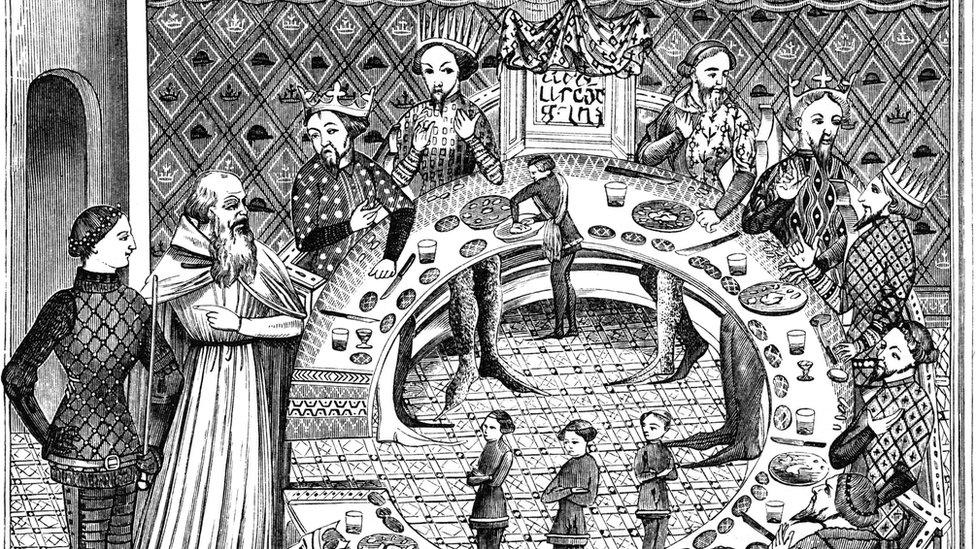William Marshal: A combination of 'Muhammad Ali and Kissinger'
- Published
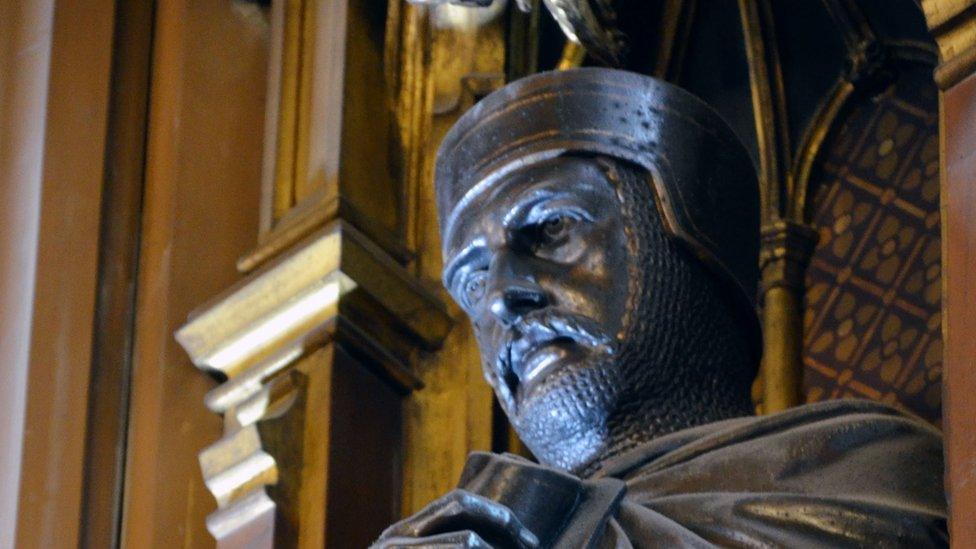
William Marshal's effigy on his statue in the House of Lords
He was the inspiration for Lancelot in medieval Arthurian tales, and has been likened to a combination of Muhammad Ali and Henry Kissinger.
Jouster, warrior, diplomat and even twice de facto king, William Marshal, 1st Earl of Pembroke died aged 73 this week 800 years ago.
Although Anglo-Norman by birth, after his marriage, Chepstow Castle became his adopted home, where he oversaw the building of most of the castle as we know it today.
He served five kings, went on crusade, and if that is not enough…he also drafted the Magna Carta.
His achievements were all the more remarkable considering that when he was born in 1146, he was a younger son without land or title.
And, as Chepstow historian John Burrows explains, the story very nearly did not happen at all.
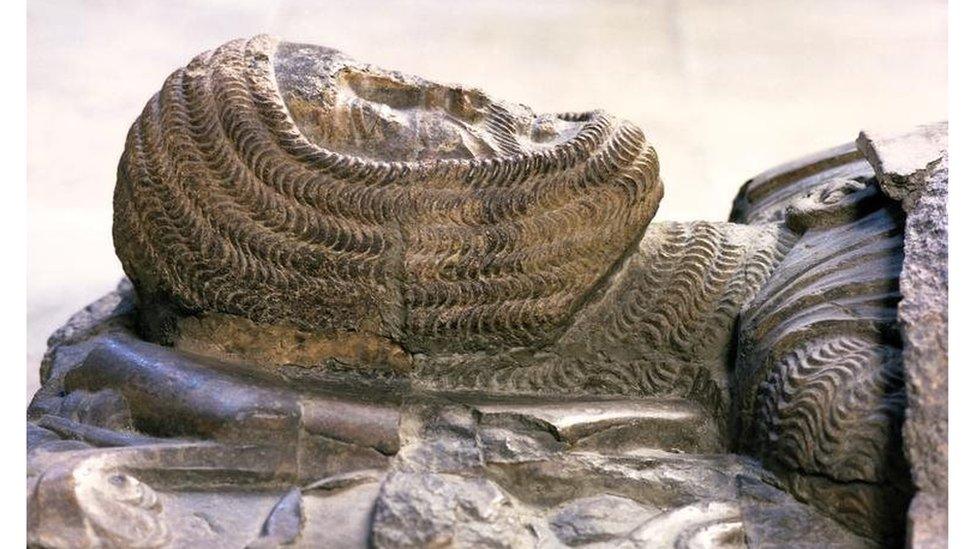
William Marshal's tomb in the Temple Church, London
"William's father, John Marshal, backed Empress Matilda against King Stephen during the anarchy which raged during the mid 12th Century," he said.
"In 1152, when William was just six, Stephen besieged Newbury Castle and took William hostage until his father agreed to surrender.
"When Stephen threatened to execute William, John replied: 'I still have the hammer and the anvil with which to forge still more and better sons'.
"So with a father like that, it must have been pretty plain to William that he was going to have to make his own way in the world."
Aged 12, Marshal began training as a tournament jouster in the household of William de Tancarville.

The original effigy is grey stone and was damaged in the 1941 Blitz. A 1850 copy is black and shows more clearly how the original effigy looked
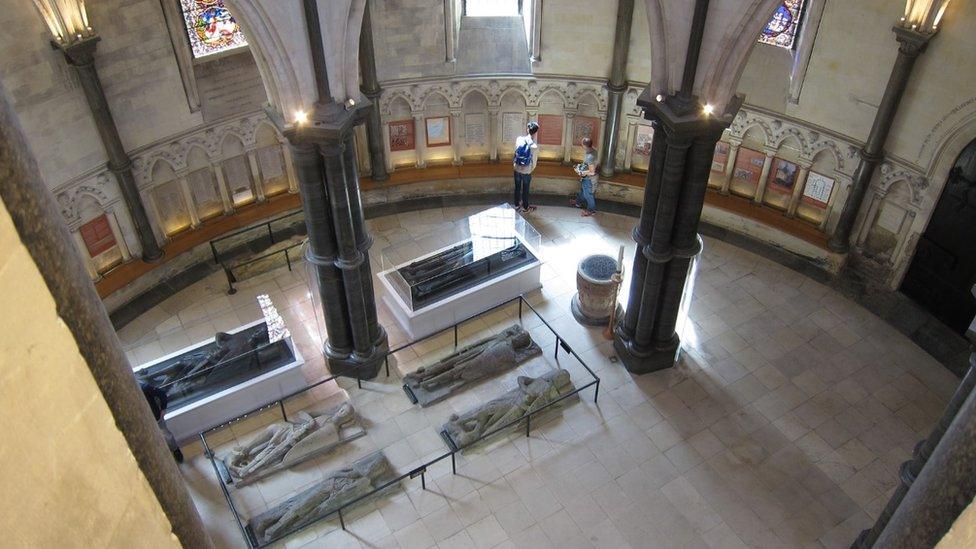
Temple Church was consecrated in 1185 and is famous for being a round church, a common design feature for Knights Templar churches
He would go on to win more than 500 bouts, and was described as the greatest ever knight Errant.
In 1170, his fearsome reputation as a warrior led Henry II to appoint Marshal Tutor-in-Arms to his son, Henry, The Young King.
Perhaps Marshal taught his charge too well, as by 1173 The Young King had declared war on his father, and 10 years later on his brother, the future Richard The Lionheart.
Throughout all these Plantagenet squabbles, Marshal managed to remain largely out of trouble.
"William fought when he needed to, but by nature he was a peace-maker," Mr Burrows added.
"When protecting The Young King against Richard I, Marshal could have killed Richard in battle, but instead opted to unseat him from his horse.
"His calming influence helped hold the warring family together, and explains how he was able to serve so many kings, even when he'd formally been on the opposite side to them."

Although his family were originally from Wiltshire, William gained Chepstow and Pembroke castles when he married wealthy heiress Isabel de Clare of Striguil in 1189
Indeed, by 1189 Richard - now king - had so thoroughly forgiven Marshal that he rewarded him with marriage to Isabel de Clare, one of the wealthiest women in England, providing him with the land and titles he had previously lacked.
Twice Marshal was appointed Lord Protectorate, effectively stand-in king, in 1199 when Richard was on crusade, and again in 1216, when King John died leaving the infant Henry III as monarch.
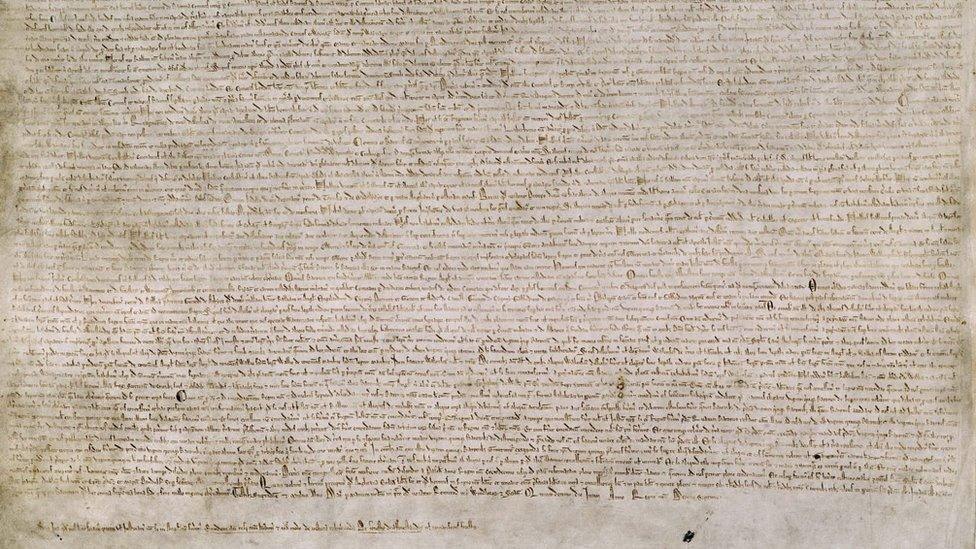
William was a key figure in the negotiations which saw Magna Carta signed
Not only did Marshal negotiate Magna Carta between King John and the barons, he was vital in implementing it after John's death; Marshal's is the first signature after the king's.
Mr Burrows said: "As a jouster he was as celebrated as Muhammed Ali, and as a diplomat he pulled off feats which Henry Kissinger would have been proud of.
"The fact that he inspired the character of Lancelot in medieval poems says all you need to know about him really; he was a fascinating person and I think people should know more about him."
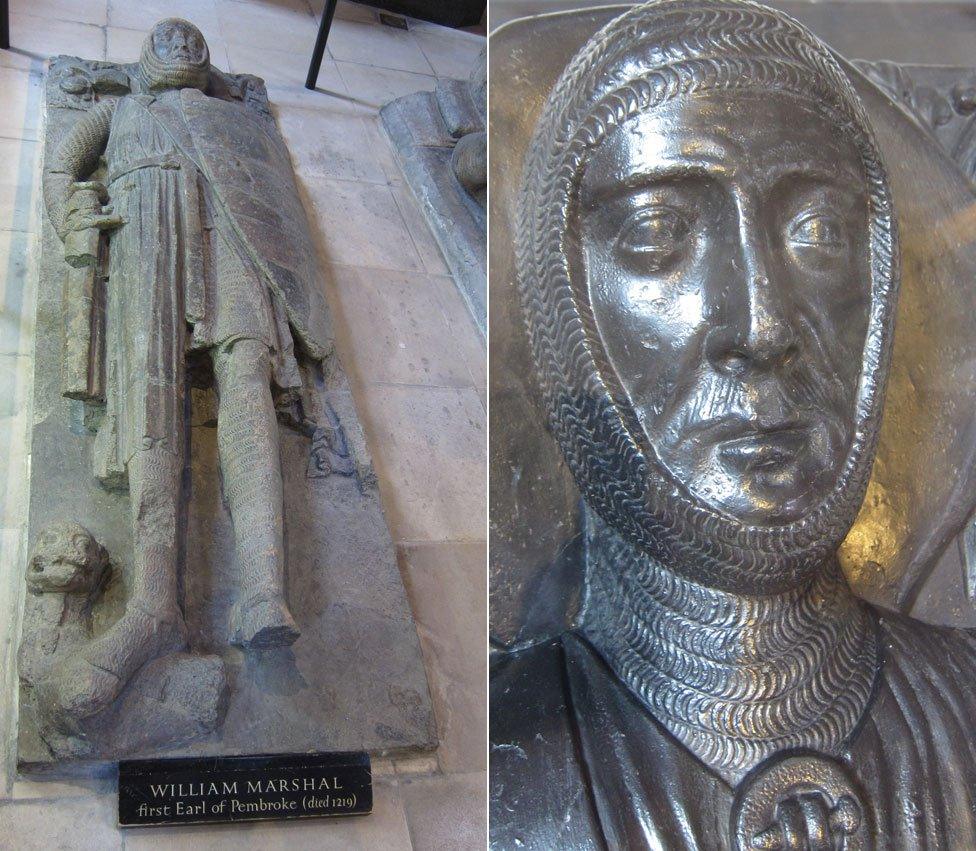
William Marshal was invested into the order of the Knights Templar on his deathbed - and is buried in Temple Church in the City of London
Marshal died on 14 May 1219, and was buried in Temple Church in London.
He was 73, a virtually unheard of age for the times, and aged 70 he had led an army into battle in defence of Henry III during the 2nd Barons War.
- Published30 July 2017

- Published18 December 2016
